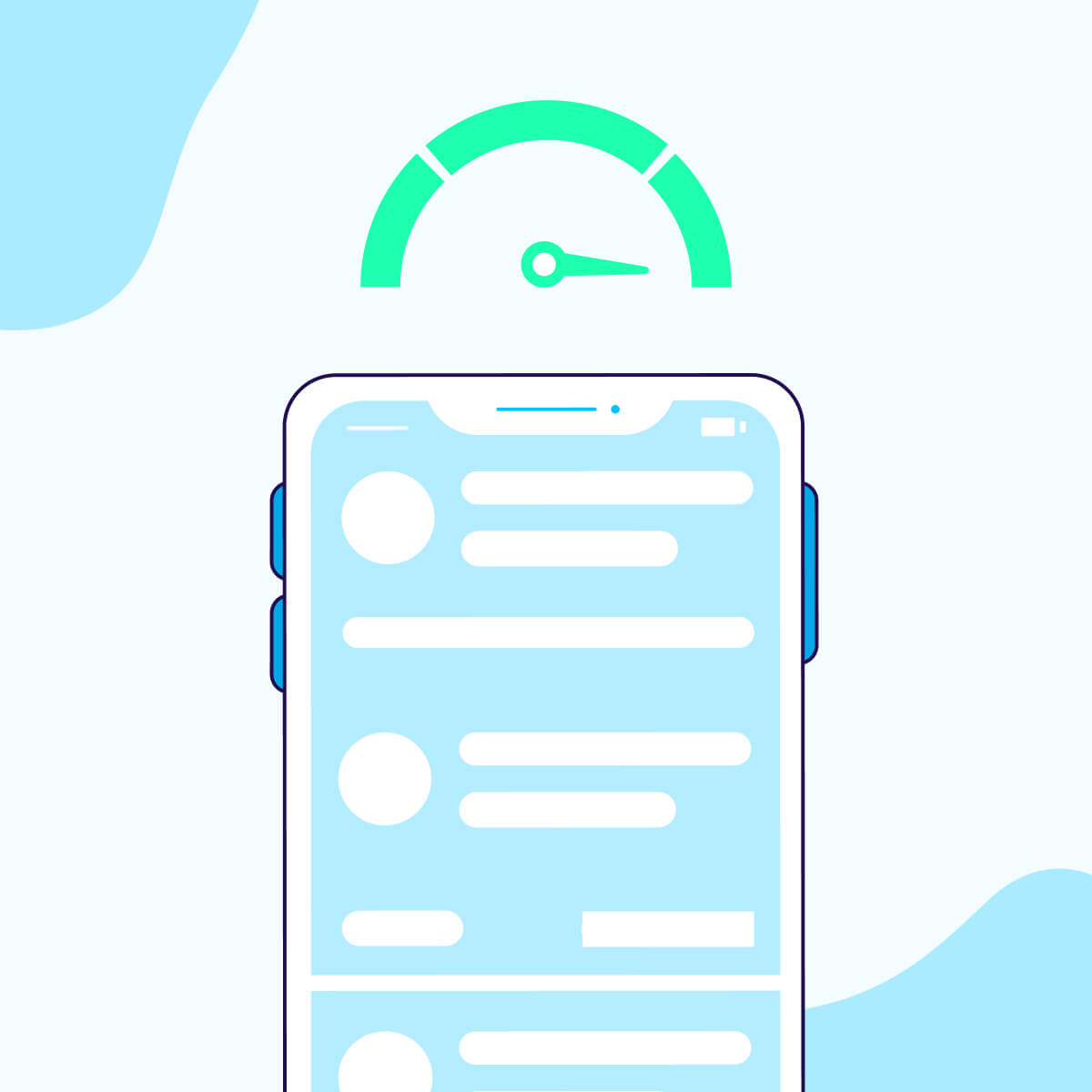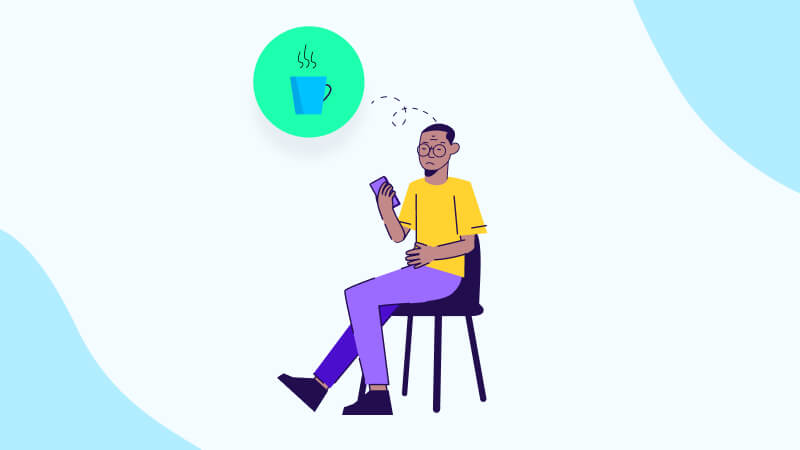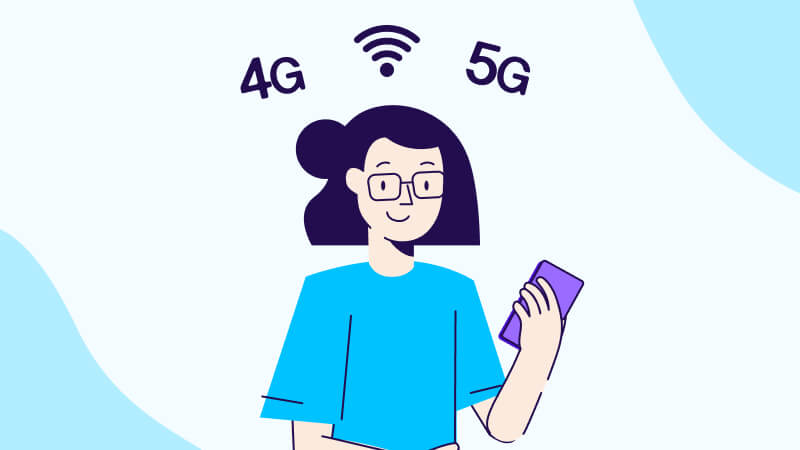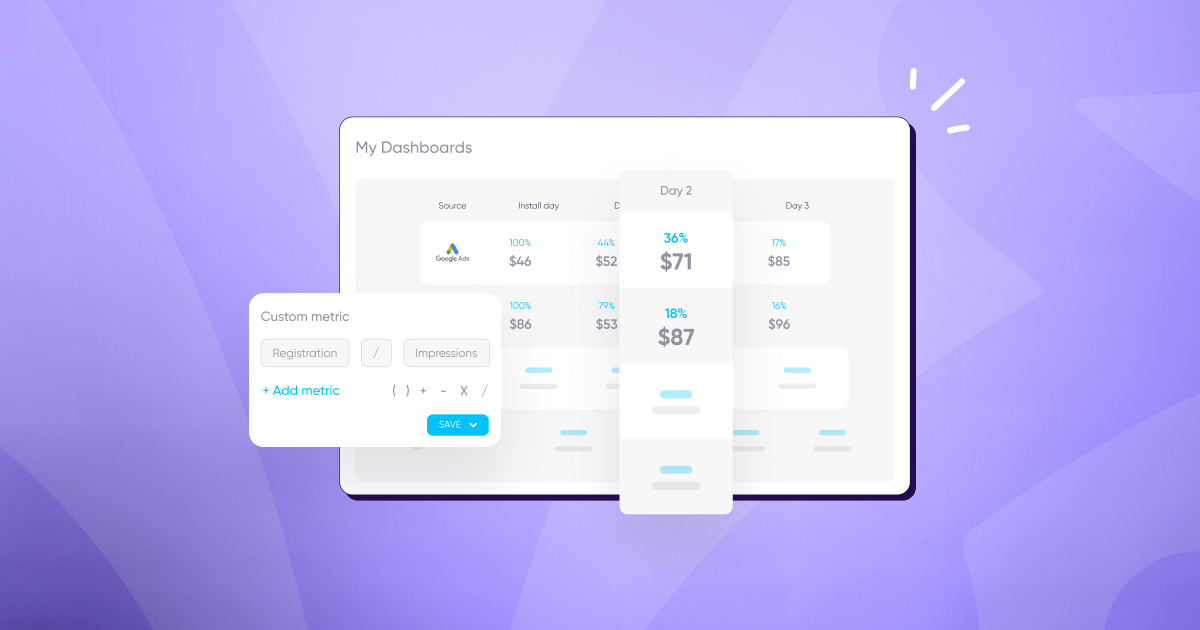
Improving app performance (and why it’s so important)

If you asked app developers to name one reason users don’t return to an app, they would probably limit their answers to the general user experience, app promotion, and app design. And while it feels like those are all good and correct answers, in reality, they’re all wrong.
You see, before you can consider things like the overall UX, promotion, and design, your app needs to perform. If it performs poorly, it is detrimental to your brand and potential users.
So, the number one reason users do not return to an app is, you guessed it, poor performance.
One of the driving factors behind a successful mobile app is continuously optimizing the end-to-end performance. So, if you have content your user wants or needs, but it takes you more than five seconds to deliver it, it’s highly likely that you’ve lost that user because your performance sucks.
App performance relies on launch and load times, app size, frame rate, compressing, and much more. It’s essential to optimize these facets of app performance to improve the user experience ASAP, and teams can make an impact by focusing on a handful of tactics.
What does app performance actually look like?
Sometimes, to understand something, you must first understand what it is not.
When talking about app performance, we are not talking solely about key performance indicators (KPIs), but about performance. The amount of energy your app uses, the amount of time it takes to load, and/or how fast it responds to user interactions, things like that.
Consider this scenario: You leave the house without having time for your coffee. You’ve been reluctant to use delivery or food apps in the past because of concerns about your privacy. Today, you throw caution to the wind and install a big-brand coffee shop app so that you can hit the drive-thru and quickly pick up your mobile order – just like their commercials promise.
Here’s the problem: the initial load time of the app is taking longer than being late for making that cup of coffee at home or waiting in line at the store. Most reasonable people — even when coffee deprived — will abandon a slow app, never to return.
In this scenario, application performance looks like an app’s initial launch being successful and you being caffeinated. But it is not limited to just initial launch time; performance is how your app functions, how fast its systems load, and how it responds to user interactions.
How important is app performance (really)?
Most (70%) of mobile app users will abandon an app if it takes too long to load. A one-second delay in response can result in a 7% loss in conversion, and nearly one in every two apps are uninstalled within the first month of download.
App performance can therefore make or break its success, as it’s directly tied to both prolonged usage and user retention.
So, let’s say our caffeine-challenged user had a fast initial load time and is now navigating through the app. Our user finds their drink and “clicks” to order, but nothing happens. Or, in reality, it takes the app 10 full seconds to offer the user size and sweetener options.
Our user wouldn’t know this, however, because they have already abandoned the app.
While the above is just an example, statistics show that 40% of users will jump ship in favor of a competitor after a bad mobile experience. In other words, this scenario ends with more than just abandoning an app for poor performance — users are going to competitors to solve their problems.
App performance is clearly very important.
How to improve app performance
Because we only know what we experience as users, performance is usually confused with only UX. However, optimal app performance relies on both the front-end and back-end of app development.
Think back to the coffee-less user who took a leap of faith on an app that didn’t deliver because it couldn’t load.

Imagine now that the app loaded, and the user navigated seamlessly — until it came time to pay. If an app crashes at peak user activity — that is also a performance issue.
Performance problems range from how fast or slow your app loads, when and if your app crashes, how smoothly certain features (like checkout) work — and so much more.
And while it is true that failing to offer a satisfactory user experience is most likely the result of poorly optimized front-ends – like suboptimal data loading or image optimizations, – these are not the only indicators of how an app is performing.
Mobile app optimization requires that both system and device are at peak performance levels. To help you improve your mobile app performance, here are a few system and device tips:
1. Check network performance

When it comes to mobile apps, the first thing to consider is performance on
functionalities like Wi-Fi, 4G, or 5G.
So, when optimizing mobile apps, a good place to start is understanding how it performs on different networks and how that performance can be improved.
Optimize network speeds and application response times
Whether caffeinated or not, users have little-to-no patience for slow launch or load times. Developers should ensure that their apps can function across a variety of networks before issues arise and ruin their app’s experience.
Good news, though — there are a few ways to immediately improve app performance:
- Reduce the number of URL redirects on your screens.
- Still using Flash? Stop. Find a better, mobile-friendly alternative.
- If the back-end server response time is sluggish, your app will be sluggish. The simplest way to avoid this is to avoid reliance on free or inadequate hosting services that offer minimal-to-no support. The easy fix is to invest in a high-performance server that avoids these types of issues.
- Keeping a native database guarantees that even if a server goes down, the user’s data is not in danger. Additionally, a backup server ensures that users can access your app even if the main server is down, and it maintains the launch and load speeds users have come to expect.
Avoid app crashes by all means necessary
The devastation of an app crash at peak user experience is real. Think about our imaginary user and the caffeine highs and lows that fictional app has put them through. The ultimate front-end performance failure is an app crash.
The best way to address this is to constantly evaluate, collect, and address the data on the following:
- Percentage of users that suffer a crash in a given amount of time
- How often the app is crashing in a given amount of time
- Rates of hang time and failed network error encounters
But let’s pause before tackling the front-end considerations and data collection.
In the back-end, developers should consider the most fundamental reason for an app crash: the number of requests an app must make with a server to complete a user request. The more requests, the more opportunity for an app to slow down and crash. The fewer requests — you get the point.
So, the easiest back-end fix for this is to reduce and limit the number of calls and requests an app needs to make with a server.
Keeping this in mind during the development stage and then collecting crash data from UX to monitor and avoid crashes — is a perfect example of the cause-and-effect relationship between the front- and back-ends of mobile app development.
2. Check device performance

Even though the front-end manifests the consequences, the problems lie in the back-end. Apps that are buggy, glitchy, consume memory and battery life — are clearly in need of urgent optimization, but another good place to start is evaluating the device itself.
Optimize screen rendering times
Yes, users want speed, but what happens if an app does not render well? How quickly can a user interact with and use the app or page? Even if the app is launched and the pages are loading, what’s the point if the user cannot interact and engage?
Developers should consider the following:
- Again, does the app render well on different operating systems (Apple/Android) or screen sizes? Remember that content created for a desktop screen will probably not render well on a mobile screen. Users do not want to zoom in or out, so when developing an app, images need to be scaled appropriately.
- How consistent are image and font sizes? Consistency is one (easy) way to improve screen rendering times. Making font and image sizes uniform limits screen resizing while scrolling, allowing users to interact with the app immediately.
Limit energy and memory consumption

Memory and battery life are actually crucial to mobile users, as our phones have only so much to spare. Therefore, the less memory and the less battery drain an app can cause, the better your UX will be as a result.
Things to consider:
- Memory leaks and push notifications are two examples of what can affect memory consumption.
- Continual app usage can quickly drain battery life, so be sure to consider unnecessary energy drains in the development phase. Alternatively, consider alerting users to turn off features like GPS and Bluetooth when they are not in use, which will help them preserve battery life and position your app as friendly and consumer-minded..
Even if the optimal user experience is achieved, the app’s back-end must always be considered. On our user’s journey to caffeinate, in each scenario where the app let them down, something happened in the back-end.
Key takeaways
Imagine our caffeine-deprived user one last time and all of the things that have to happen for a positive end-user experience — that results in a cup of coffee and a potential long-term consumer for that app.
Remember that the best way to caffeinate users and retain them as customers is for developers to constantly reflect on the front-end directly correlating to what happens at the back-end, and vice versa.
An app crashing at peak user activity indeed results in a negative user experience, but what causes the crash could be nestled in your back-end, and it’s your front-end that deals with the consequences. At the same time, optimizing mobile apps also relies on network and device capabilities.
It seems like a lot to remember, but all you need to bear in mind is the following:
TL;DR:
- Mobile app performance is more than what is experienced in the front-end; it is functionality, speed, and response to user interactions.
- App performance is an essential component of app development. Potential users won’t just uninstall an app when frustrated; chances are they will likely seek out a competitor to address their needs.
- Improving app performance includes, but is not limited to, optimizing network and device reliabilities for the app.
- There are immediate, quick, and easy steps to improve app performance for response time, screen rendering, crashes, and energy consumption. Be sure to implement them today to secure a smooth and enjoyable UX, which are very likely to result in improved app engagement, customer loyalty, and user retention.




